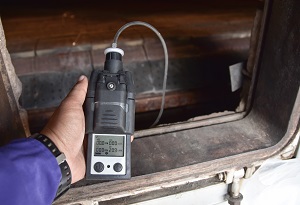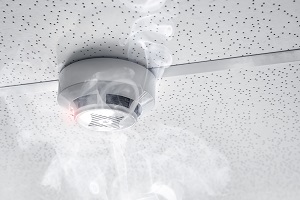
Companies who manufacture and process hazardous materials carry the responsibility of protecting their employees, the public, and the environment from combustible and toxic gases. Gas detection monitors, including portable gas leak detectors, are essential not only for safety measures but also to meet ever-increasing governmental and industry standards. With the anticipated 2020 changes implemented by standards organizations such as the International Electrotechnical Commission (IEC), it’s important for companies in the hazardous industries to perform internal risk assessments regarding their gas detection monitors.
What Is a Gas Detection System?
Equipment that detects and measures the concentration of specific gases in the air is a gas detection system. The U.S. government is especially stringent regarding the detection of hazardous gases and ensuring workplace safety. Companies within the hazardous materials industry must not only stay current on compliance requirements but must also constantly perform internal risk assessments to assess safety within their industrial plants. There are a variety of different types of gas detection available on the market today. These are:
- Fixed gas detectors are those installed within large settings primarily for detecting major leaks. Many can shut down a system if a leak reaches a specified alarm level.
- Portable gas detectors operate at a closer range to employees and monitor their breathing zone. They may be handheld or attached to a belt or uniform and are battery powered.
- Gas detection or dosimeter badges are generally one-use, inexpensive monitors that change color when a target gas is detected. They are worn by employees and show immediate results.
- Gas detection tubes are another single-use, inexpensive device to detect a target gas. Although they are easy to read, analysis can take from 10 to 15 seconds.
Toxic, Flammable, and Asphyxiant Gas Detection
Those who work in manufacturing plants must be protected from byproducts of gases in several different settings, including wastewater treatment, chemical plants, power generation, and semiconductor manufacturing. Some of the gases these workers may be exposed to include—but aren’t limited to—carbon dioxide, hydrogen sulfide, carbon monoxide, propylene, methane, nitrogen dioxide, ammonia, and benzene. In most settings, the best protection against exposure includes a combination of both fixed gas detection monitors and portable gas detection equipment.
Upgrading and Maintenance of Gas Detection Equipment

Monitoring the performance of both fixed and portable gas detection monitors is essential. They must be maintained and calibrated regularly to ensure accuracy and worker safety. Regular testing and filter changes should be conducted as per manufacturer recommendations. Companies that sell gas detection equipment generally offer service contracts that include both preventative maintenance and on-site training for employees. A reliable company will also provide in-field recalibration services and determine if your equipment needs to be updated in order to stay in compliance with governmental requirements and industry specifications.
Installation of Gas Detection Equipment
Safety systems that aren’t installed correctly or don’t meet compliance regulations not only affect your bottom line, but they also endanger employees and surrounding populations and environments. Whether you require installation of new equipment, upgrades to your current fixed gas detection monitors, or re-evaluation of your portable gas detection equipment, DOD Technologies, Inc., can assist you in choosing the right system design. Visit our website to learn more about our fixed and portable gas detectors for sale.






